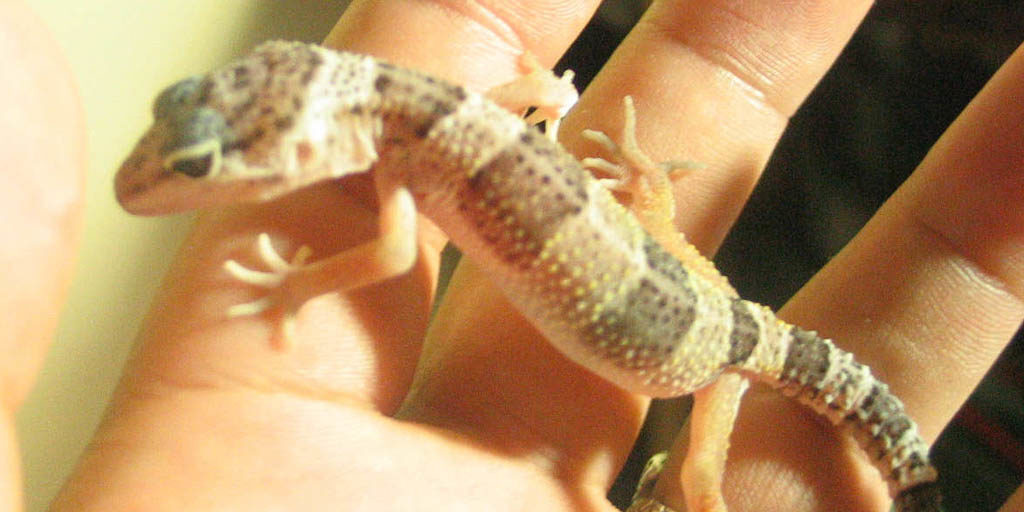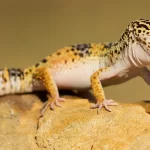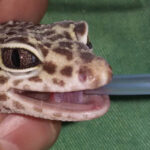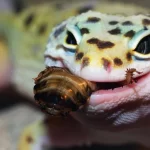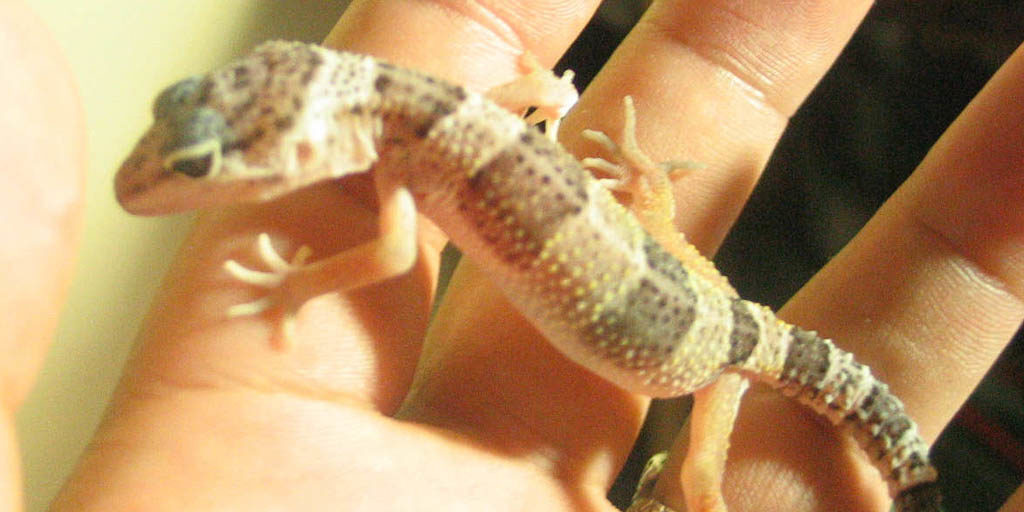
Leopard geckos will need to be handled from time to time. They often need to be picked up, shoved, moved from one enclosure to another and/or need to be gripped to be closely inspected. When considering the fragile nature of Leopard geckos and the potential to transmit diseases, handling should be done under responsible supervision and caution should be taken afterwards (see later).
When handling a Leopard gecko, its intentions should be anticipated and it should be observed closely at all times. Untamed Leopard geckos might attempt to escape while being handled. An uncomfortable Leopard gecko can at any time walk, dash or jump from your hands while being handled.
The correct way to handle a Leopard gecko
Adult and baby Leopard geckos are handled differently. Even more so than adults, baby Leopard geckos need to be handled with extra caution.
Handling adult Leopard geckos
Larger, adult Leopard geckos are to be handled with two hands. They can be picked-up by scooping one hand under the belly while supporting the rest of the body with the other hand. The Leopard gecko should be allowed to rest on the palm of your hand while your fingers are gently curled over its back. When sitting down, a tame Leopard gecko can be allowed to sit on the body of the handler.
Handling baby Leopard geckos
Baby Leopard geckos can be picked-up by using your hand to make a ‘cage’ around the body. Tame baby Leopard geckos can also be encouraged by a gentle shove to go and sit in your hand before ‘caging’ your fingers around the body. When handling a baby Leopard gecko, use slow, careful movements and restrict handling to a bare minimum.
Falling injuries
Falling injuries are commonly seen in pet Leopard geckos. Although falls from shorter distances sometimes go without injuries, a fall from a significant height (e.g. from a sitting lap or standing person) can lead to serious internal injuries. Holding and handling a Leopard gecko correctly can prevent unnecessary falls from happening.
Tail injuries
Leopard geckos are known to be able to lose their tails. This commonly happens due to falling injuries (see earlier) or incorrect handling. By grabbing a Leopard gecko by the tail, it can easily break off. Also see tail injuries in Leopard geckos for more information.
Hygiene practices while handling a Leopard gecko
Some diseases can be transmitted from Leopard geckos to humans. In-contact human hands can also be the carrier of certain diseases from an infected Leopard gecko to a healthy one. Irrespective the risk for transmitting diseases, Leopard gecko handlers are always advised to take responsible hygienic precautions.
 F10 has a wide range of products including wipes, hand soaps, sprays and contact cleaners that is safe and effective to use with Leopard geckos. F10 products are available from certain veterinary clinics and hospitals.
F10 has a wide range of products including wipes, hand soaps, sprays and contact cleaners that is safe and effective to use with Leopard geckos. F10 products are available from certain veterinary clinics and hospitals.
As a summary, these are good hygiene principles for Leopard gecko owners:
- Do not touch your face while, or directly after, handling a Leopard gecko, the inside of their enclosure, feeder insects or their substrate.
- Protect any open sores or wounds you might have on your hands before touching or handling a Leopard gecko.
- Wash and disinfect your hands (or in-contact skin) directly after handling a Leopard gecko, the inside of their enclosure, their food or their substrate.
- Do not kiss a Leopard gecko or bring it close to your face.
- Do not eat while handling or even close in close proximity with Leopard geckos.
- Use safe, but proven disinfectants to wash, wipe or spray your hands.
For more information, also see our Leopard gecko owner hygiene article.
When not to handle a Leopard gecko
Although it is generally recommended to restrict the handling of Leopard geckos to only when it is absolutely necessary, there are cases where this is more important. Leopard geckos should rather not be handled in the following situations:

